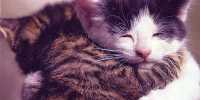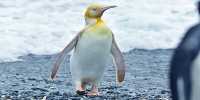If you are an aspiring astronaut, you may want to review your feelings towards spiders before submitting an application. I hope that even some spider fans may agree that zero gravity is not an ideal work environment to walk around, but science animal studies have revealed novels and surprising insights into how spiders are affected, their web.
On Earth, spiders form asymmetrical webs with centers near the top of the web rather than at the bottom. This is just as useful when it comes to catching some food that works with gravity without the spiders going against it. When spiders are at rest, their heads are pointed towards the ground for the same reason. So, what does the web look like if you remove gravity to act as an environmental factor or vice versa?
To find out, the astronauts took some spiders (arachnauts, if you please) go to the ISS. Their subjects were two juveniles, Trichonephila clavipes, spiders who were observed for two months to create webs under zero gravity. Their efforts were photographed every five minutes at this time and compared almost the same microcode to almost the same scale of landing on Earth under almost the same experimental conditions.
Like most spiders under the influence of gravity, the Earth’s Trichonephila spiders form asymmetrical webs with a center at the top and face the ground at rest. Based on the logical effect of gravity on these spiders, it was hypothesized that zero-gravity spiders would create symmetrical webs and illuminate themselves in random ways.
Their assumptions were partly correct, as space spiders were creating symmetrical webs for the most part. However, a closer analysis of their efforts revealed that the light had an effect on the web, just as the web was more symmetrical than it was when it was oriented, Was.
“We concluded that the lack of gravity could serve as an orientation guide for spiders during the direction of the light in web building and when waiting for prey in the hub,” the researchers wrote.
In an interesting study, perhaps the more interesting thing is that this is not the first time such a test has been attempted but the first attempt was a disaster. In 2006, a Metepeira labyrinthea spider was taken to lead the ISS as a reserve in case of any problems with the Larinioides patagiatus spider. Oh, boy did it.
The reserve spider was able to escape from its storage chamber and ran loose with another spider in the experimental chamber. In a short space of time, the two spiders made a messy web and regularly walked each other’s path. To make matters worse, the crew stockpiled spiders for feeding and reproduced at a much faster rate than expected. Their larvae were able to escape into the experimental chamber and as more babies were born the spiders became harder and harder to see. Finally, a month later, the spiders were effectively buried alive in the fly larvae.
Incredibly to think that the same people behind taking humans to the moon fought to build maggot-proof chambers. It is reminiscent of the opening scene in Jurassic Park where the same financing of the resurrected dinosaurs could not extend to its remotely driven container for its most endangered species.















